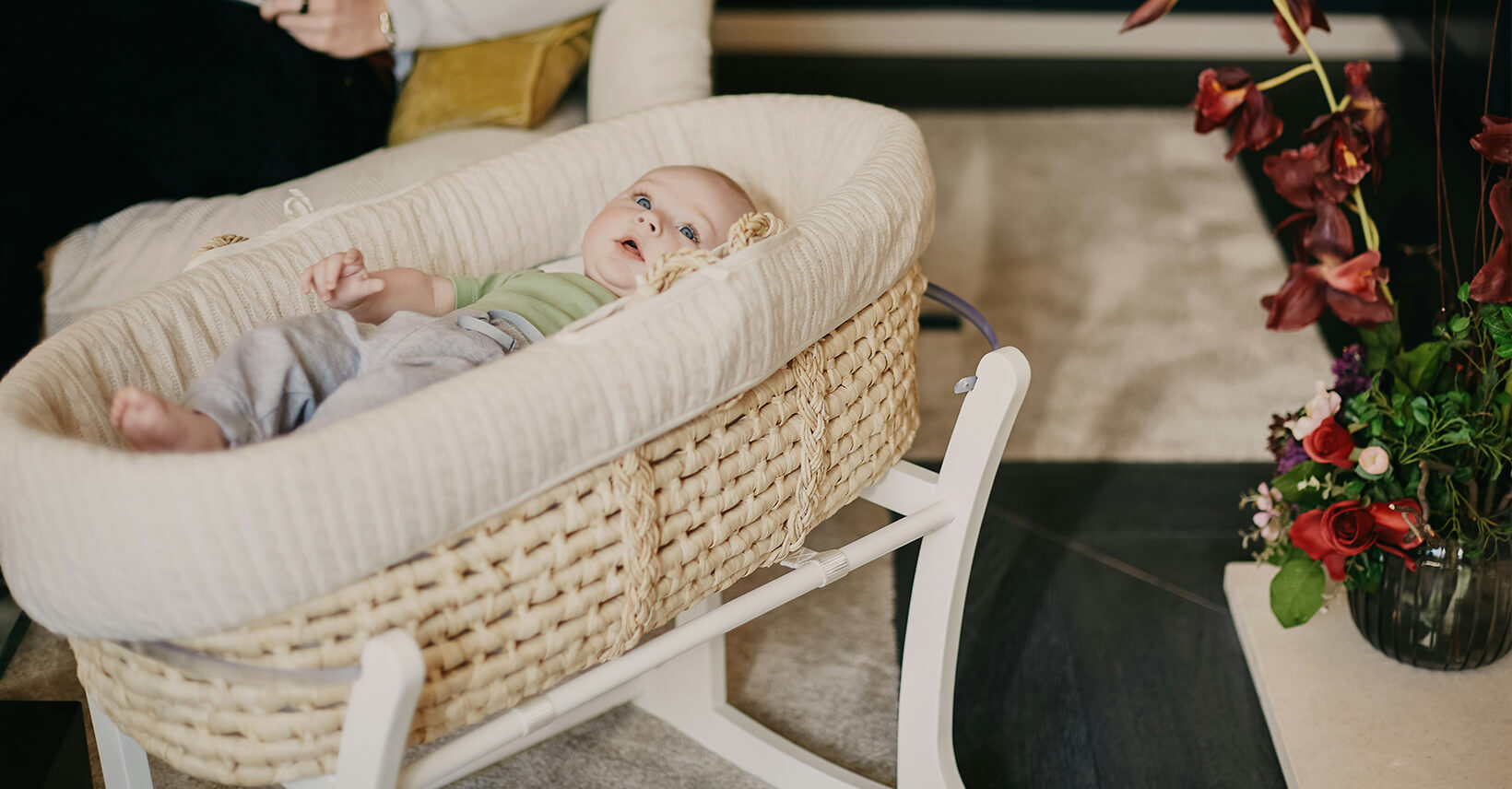


Struggling with your baby not wanting to sleep in a bassinet? You are not alone. Many parents have been hit with this issue and are looking for solutions to help their little ones settle down and get some rest.
In this blog, Kaiya Baby will look at practical tips and strategies for parents when their babies won't sleep in the bassinet. From creating a soothing sleep environment to establishing a consistent bedtime routine, we've got you covered.
A bassinet is a portable crib designed for newborns and infants, usually for babies from birth to about four months. It is characterized by:
Source:
https://en.wikipedia.org/wiki/Bassinet
All in all, bassinets provide a comfortable and safe sleeping space for newborns in the first few months of their lives.
Several reasons why newborns sleeping in a bassinet is important include:
Putting your baby in a bassinet reduces the risk of accidental suffocation or Sudden Infant Death Syndrome (SIDS) because bassinets are designed with safety features such as firm mattresses and breathable mesh sides.
Source:
https://www.aap.org/en/patient-care/safe-sleep/
Bassinets allow babies to sleep next to their parents, promoting bonding and facilitating nighttime feeding and comforting without having to leave the room.
The cozy enclosed space of the bassinet provides a comfortable environment for newborns, mimicking the comfort of the womb and promoting better sleep patterns.
Bassinets are typically made with breathable mesh sides and lightweight materials that help regulate an infant's body temperature and reduce the risk of overheating, which can increase the risk of sudden infant death syndrome.
Placing an infant in a bassinet next to a parent's bed allows for easy access to the infant during nighttime awakenings, facilitating feeding, soothing, and monitoring the infant's well-being without having to get out of bed.
Using a bassinet helps babies gradually transition to sleeping independently in their own crib or bed, as they become accustomed to sleeping in a separate space while still being close to their parents.
Some babies doesn't like bassinet and won't sleep in the bassinet. Understanding below potential causes below can help parents troubleshoot and find solutions to get their baby sleeping more comfortably in the bassinet.
A common reason babies resist sleeping in a bassinet is discomfort. This can be due to an uncomfortable mattress, a room temperature that is too hot or too cold, or unfamiliarity with a new sleep environment.
Infants often find comfort in physical contact with their parents, and they may resist sleeping in the bassinet because they miss the warmth and closeness of being held or cuddled.
Many infants have the startle jump reflex, also known as the Moro reflex, which awakens them when they sense sudden movement or a change in their environment. This reflex can disrupt sleep and make it difficult for infants to sleep soundly in their bassinet.
If babies already strongly associate sleep with a particular environment or routine (such as rocking to sleep or feeding to sleep), they may resist falling asleep in the bassinet if it deviates from their usual sleep cues.
As babies grow and develop, their sleep patterns and preferences may change. They may become more aware of their surroundings and more easily disturbed by noise or movement, thus resisting sleeping in the bassinet.
Some infants experience separation anxiety, especially in the first few months of life, which can make them reluctant to sleep alone in their bassinets. They may prefer to be near their parents for comfort and security.
By reading the below tips consistently and patiently, parents can help their baby feel more comfortable and secure sleeping in the bassinet, ultimately promoting better sleep for the whole family.
Introduce the bassinet gradually, starting with short periods of awake supervision in the bassinet during the day. This will allow your baby to become familiar with the new sleep environment without associating it only with nighttime sleep.
Make the bassinet as cozy and pleasant as possible by using soft bedding (such as fitted sheets) and making sure the room temperature is not too hot or too cold. Swaddling can also help simulate the comfort of being held and reduce the startle reflex.

Consistency is key to establishing healthy sleep habits. Establishing a calming bedtime routine signals to your baby that it's time to relax and get ready for bed. This can include activities such as warm baths, gentle massages, and quiet story times.
Help your baby learn to self-soothe by keeping them awake in their bassinet for a while before falling asleep. Soothe and comfort if necessary, but gradually give them the space to fall asleep independently.
White noise can mask background sounds and create a soothing environment conducive to sleep. Consider using a white noise machine or app to provide a steady, comforting sound for your baby when they are sleeping in their bassinet.
Reduce the risk of Sudden Infant Death Syndrome (SIDS) by following safe sleep guidelines to ensure that your baby sleeps safely in the bassinet. This includes putting your baby to sleep on his or her back, avoiding loose bedding and soft objects in the bassinet, and making sure the sleep environment is smoke-free.
That's all our advice on how to get your newborn to sleep in the bassinet! Kaiya Baby hopes every parent can help their babies fall asleep in the bassinet after reading this guide.
We also have more tips on:
Speaking of sleep sacks, keep in mind that Kaiya Baby offers everything safe and cozy sleeping bags for winter, swaddles, sleep sacks with feet, and more to help you improve your baby's sleep habits at night.
So, shop now and follow the above guide to get your baby to sleep in a bassinet.

Lily Hou
An expert in sleep sack design, is a valued contributor to Kaiya Baby's blog. With a strong background in baby sleep bags and maternal care, she is highly regarded for her professionalism. Lily prioritizes baby comfort and safety in her designs, using high-quality materials. Her insightful articles on sleep bags have been featured in reputable publications and have gained a significant readership. Trust Lily to help you create a comfortable and safe sleep environment for your baby, backed by her proven track record in the industry.
Leave a comment
This site is protected by hCaptcha and the hCaptcha Privacy Policy and Terms of Service apply.